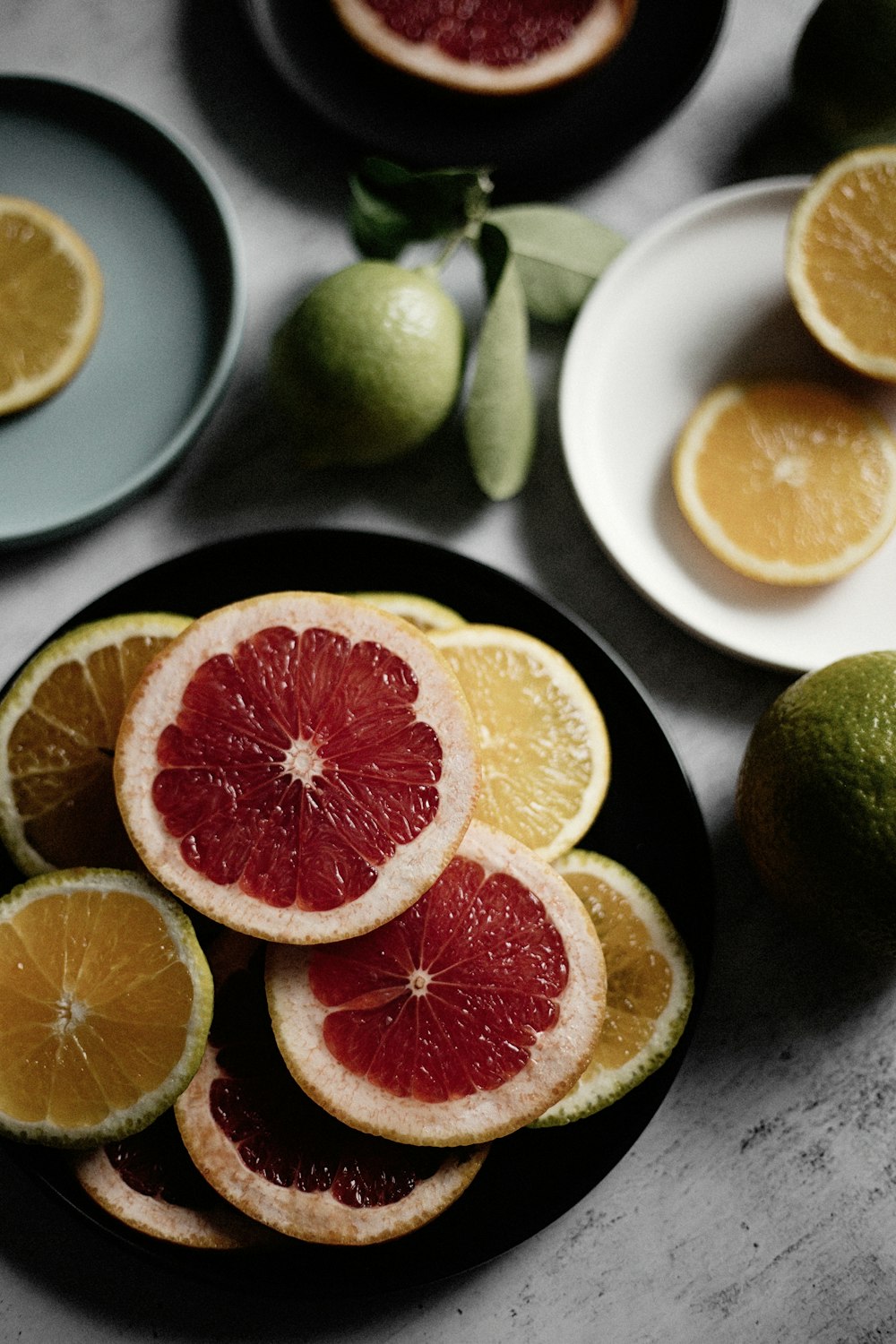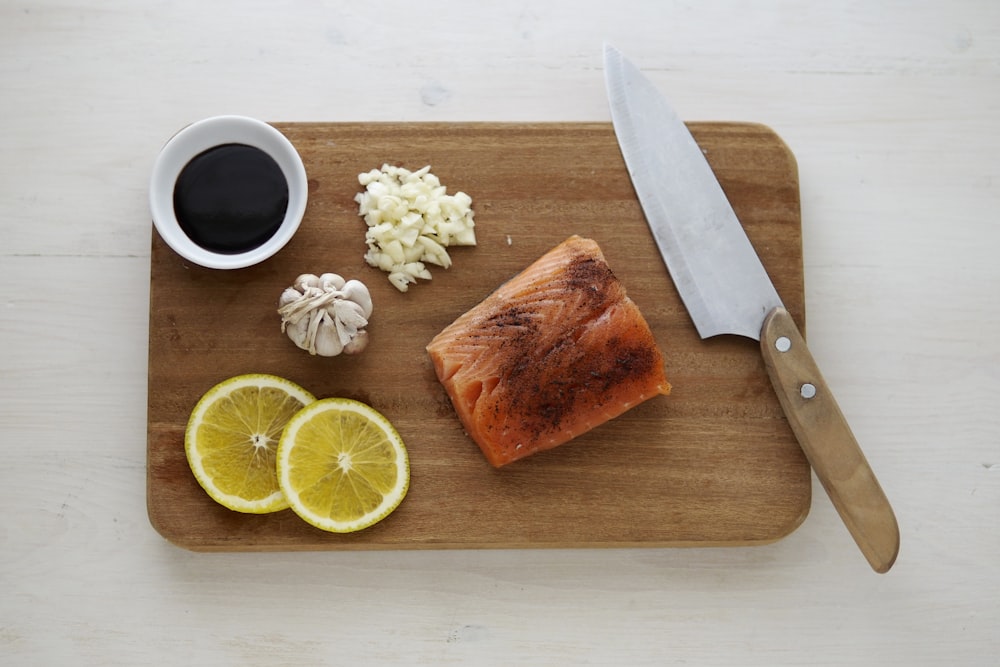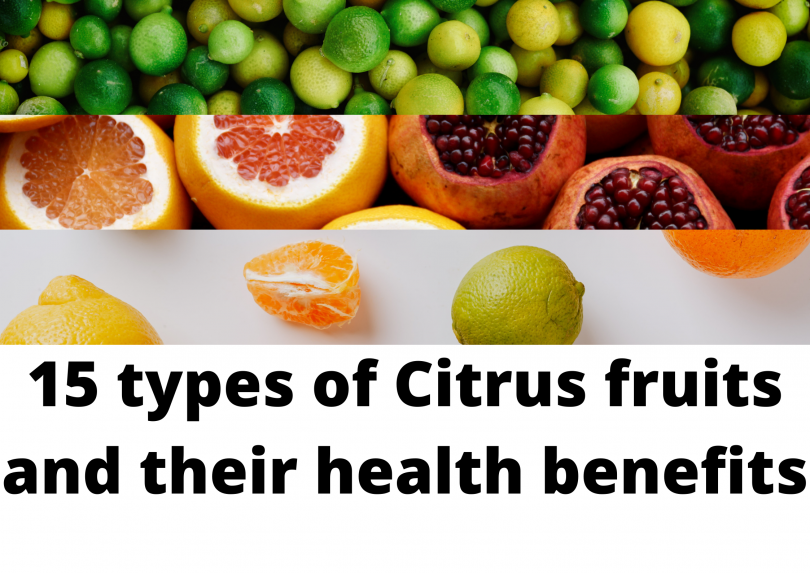Who doesn’t enjoy the tangy, Vitamin C-rich fruity goodness that citrus fruit provides? This class of fruit is the most favoured and sought after in the entire world, as it is the perfect combination of sweet and sour. Citrus fruits are so popular that humans have developed a plethora of delicious varieties.
What is citrus fruit?

Fruits of citrus trees and shrubs grow on flowering trees and shrubs. They have a leathery rind and a white pith that surrounds juicy segments.Australia, New Guinea, New Caledonia, and possibly Southeast Asia are their native habitats .They are now grown all over the world in tropical and subtropical climates. Spain, Brazil, China, the United States, Mexico, and India are all major production hubs. Juice is made from nearly a third of all citrus fruits.
All year long, you can find a variety of citrus fruits. In the Northern Hemisphere, the peak season for oranges and grapefruits is from mid-December to April.
Here are a few popular citrus fruit varieties(Source):
Sweet oranges: Valencia, navel, blood orange, cara cara
Mandarins: Satsuma, clementine, tangor, tangelo
Limes: Persian, key lime, kaffir
Grapefruit: White, ruby red, oroblanco
Lemons: Eureka, Meyer
Other kinds: Citron, sudachi, yuzu, pomelos
History of Citrus

Citrus trees are found in Asia’s tropical and subtropical regions, as well as the Malay Archipelago. Over millions of years, the large varieties of citrus fruit we see today evolved from tiny berries.
Around 310 BC, the first member of the citrus family arrived in Europe, where it remained the only citrus fruit for several centuries. Limes, lemons, and oranges were thought to be gaining popularity in Italy at the time. Sweet oranges were well-developed in China before being introduced to Europe, as evidenced by Han Yen-“Monograph chih’s on the Oranges of Wên-chou, Chekiang,” which listed 27 different varieties of oranges and other citrus fruit. All modern citrus fruits, including mandarin oranges, pomelo, and citron, are hybrids of three original species. Lemons, grapefruit, and oranges are all common citrus fruits that were created by crossing these three original species. Isn’t it incredible?
Types of Citrus Fruit
Take a look at some of the most popular citrus varieties.
Orange

This citrus fruit, also known as sweet orange, is a cross between a pomelo and a mandarin. The juicy fruit has been around for millennia and grows in tropical and subtropical climates. The earliest written record of oranges dates back to 314 B.C. in Chinese literature. Oranges were discovered to be the most cultivated fruit in the world in 1987.
Mandarin Orange
Mandarin oranges, also known as mandarin or mandarine, are very similar to the common sweet orange variety. Mandarin oranges have an oblate shape rather than the spherical shape of common oranges. They’re also less sour and sweeter than oranges.
In Chinese culture, the fruit is thought to have medicinal properties and is used to treat stomach and phlegm problems. They’re also traditional symbols of prosperity and good fortune, and they’re prominently displayed during the Chinese New Year.
Tangerine

The tangerine is said to be a cross between a mandarin orange and a pomelo. As a result, it is a famous Clementine variety. The reddish-orange mandarin variety is divided into several classes, with citrus being one of them. It got its name because it originated in the Moroccan port of Tangier.
This variety is much sweeter and has lower acid levels than the common orange variety. Some varieties, such as the Clementine, are seedless and have a thin, easy-to-peel rind.
Blood Orange

The blood orange’s sinister name comes from the fruit’s deep crimson pulp, which is caused by anthocyanins, an uncommon antioxidant found in citrus fruit. The dark reddish tone occasionally bleeds into the thick, tough, and difficult-to-peel rind of the fruit.
The blood orange is a natural orange mutation that has a distinct raspberry-like flavour in addition to the usual sweet and tart citrus flavours. As a result, it’s frequently used in marmalade, salads, and Italian soda.
Tangelo

The Tangelo is a hybrid of grapefruit and mandarin. They’re also known as honeybells, and they have a distinctive knob on the stem that makes them easy to identify. These citrus fruits have a tangy, tart flavour and have a loose skin that is easy to peel off. They are extremely juicy and have a tangy, tart flavour.
Because of their sweet flavour, they can be used in place of mandarins and sweet oranges in recipes.
Bitter Orange

As the name implies, this citrus variety is extremely sour and bitter, to the point where most people are unable to consume it raw. Bitter orange has a wrinkled appearance and is a cross between a mandarin orange and a pomelo. The sour flavour comes from the acidic juices, while the bitter flavour comes from the essential oils present. Bitter oranges, also known as Seville oranges, are a common ingredient in marmalade and a key ingredient in the orange-flavored liqueur triple sec.
Yuzu

Yuzu, also known as Citrus junos, is a small grapefruit with wrinkled skin. It has a strong aroma and varies in colour from yellow to green depending on how ripe it is.
Although a Japanese variety called yuko is sweet, the yuzu has a tart flavour similar to grapefruit and has overtones of mandarin. Yuzu is rarely eaten as a fruit; instead, its rind and juice are used in Asian dishes such as ponzu sauce, yuzu tea, sweets, and beverages. Its rind contains a sharp oil that is used to make perfume.
During the winter solstice in Japan, whole yuzu fruit is floated in baths to release their aroma.
Grapefruit

Grapefruit is thought to be an unintentional cross between a common orange and a pomelo. Grapefruit gets its name from the fact that it grows in a cluster of fruit on its tree that looks like a grape cluster. Grapefruit is a popular breakfast citrus fruit with a sour to semi-sweet, often slightly bitter flavour. Depending on the cultivar, the pulp of the fruit can be white, pink, or red.
Grapefruit is used to make sweets in Caribbean countries.
Pomelo

Pomelo, also known as pummelo or shaddock, is one of the original citrus species, along with citron and mandarin, that gave rise to hundreds of other citrus varieties.
The fruit ranges in colour from pale yellow to light green and is quite large, weighing between 2-4 pounds. It has a sweet white — and less commonly, pink or red — flesh with a sweet flavour, similar to a mild grapefruit. It does not, however, have the bitterness of grapefruit.
Pomelo rind is sometimes used in marmalade or dipped in chocolate. It’s also found in aromatherapy baths.
Ugli fruit

This citrus, also known as the Jamaican tangelo, ugli fruit, or uniq fruit, may appear ugly on the outside, but don’t be fooled by its appearance. It’s one of the most delectable citrus fruits, created by crossing oranges, tangerines, and grapefruits. The result is a juicy fruit with all the sweetness of a tangerine and none of the bitterness of a grapefruit, as well as a highly fragrant rind.
Kumquat

This delicious citrus fruit looks and tastes a lot like a sweet orange, but it’s much smaller, about the size of a large olive. In Cantonese, kumquat means “golden tangerine.”
The rind and pulp of the Japanese variety are eaten whole. Because the skin is sweet, but the pulp in the centre is sour, this is the case. It has a tart, refreshing flavour when eaten whole. It can also be found in marmalades and a variety of desserts.
Citron

We’ve gone back to square one. Citron is one of the original citrus fruit species from which all other citrus fruit species descended. It has a thick rind and a pleasant aroma. Its pulp is dry, unlike that of other citrus species. That isn’t to say it isn’t used in other places. Citron rind is frequently candied and used in confections. It also has a variety of medicinal uses, including treating nausea, skin diseases, haemorrhoids, and parasite ejection.
Calamondin

The small round citrus fruit, also known as calamansi, has a reddish-orange, thin skin and juicy acidic flesh. It’s a cross between a kumquat and a mandarin orange. The pulp is acidic and sour (despite the sweetness of the peel) and is commonly used in cooking and preserves.The sour pulp is used to marinate fish, pork, and poultry in Asian cuisine. Calamondins grown in Florida have undertones of apricot, tangerine, lemon, guava, and pineapple.
Lemon

They say, “When life gives you lemons, make lemonade.” The adage refers to the citrus fruit’s distinct and extremely sour flavour. The sour flavour comes from the high levels of acid in its juice, which also serves as a cleaning agent. Lemonade is made from the small yellow fruit, which is used in baking, cooking, aromatherapy, and cleaning, among other things.
Key Lime

Who doesn’t enjoy a slice of key lime pie? This delectable dessert is made from a small, yellow fruit that looks similar to a lemon. When picked, it is usually green, but when fully ripe, it turns yellow.
This lime, unlike the very sour lemon, has a sweet flavour and is very aromatic. The fruit is boiled in brine and then dried in the Middle East to make black lime, a condiment. The Persian lime is its most well-known variety. The fruit has no seeds, is larger than the key lime, and lasts longer. It’s also not as bitter as key lime.
Five Health Benefits of Citrus Fruits
Rich in Vitamins and plant compounds

Citrus fruits are high in vitamin C, a nutrient that helps to strengthen the immune system and keep skin smooth and elastic.
In fact, one medium orange contains all of the vitamin C you require for the day.
Citrus fruits also contain B vitamins, potassium, phosphorus, magnesium, and copper, as well as other vitamins and minerals that your body requires to function properly.
They’re also high in plant compounds that have a variety of health benefits, such as anti-inflammatory and antioxidant properties.
These compounds, which include over 60 different flavonoids, carotenoids, and essential oils, are responsible for many of the health benefits of citrus fruit.
Good Source of Fiber

Citrus fruits contain a lot of fibre. Four grammes of fibre are found in one cup of orange segments. To put that into perspective, 14 grammes of fibre are recommended for every 1,000 calories consumed. Only 4% of men and 13% of women in the United States are estimated to receive that amount. Fiber has a number of health benefits, including aiding weight loss and improving digestive health. Oranges are high in soluble fibre, which is the type of fibre that helps lower cholesterol levels.
Citrus fruits are unique among fruits and vegetables in that they have a higher soluble to insoluble fibre ratio than other fruits and vegetables.
Low in calories

Citrus fruits are a good choice if you’re watching your calorie intake. They’re low in calories, but the water and fibre they contain help you feel full.
The following are the calorie counts for the most common citrus fruits:
- 1 small clementine: 35
- 1 medium orange: 62
- 1/2 pink grapefruit: 52
- 1/2 white grapefruit: 39
- Juice from 1 lemon: 12
Help fight or protect against Cancer

Citrus fruits have been linked to a lower risk of certain cancers in numerous studies. People who ate one grapefruit or drank one serving of grapefruit juice daily had a lower risk of lung cancer, according to one study. Citrus fruits may also protect against esophageal, stomach, breast, and pancreatic cancers, according to other studies. These fruits contain a variety of plant compounds, including flavonoids, that may aid in the prevention of cancer. Some of these flavonoids are antioxidants, and they may inhibit the expression of certain genes linked to degenerative diseases like cancer.
Citrus fruits may also aid in the fight against cancer by suppressing tumours, preventing new cancers from forming, and rendering carcinogens inactive.
Boost and protect your brain

Citrus flavonoids may help protect against neurodegenerative diseases like Alzheimer’s and Parkinson’s, which are caused by the breakdown of nerve cells. Inflammation plays a role in these diseases.
Citrus fruits contain anti-inflammatory flavonoids that are thought to protect against a chain of events that causes the nervous system to deteriorate.
In mice and test-tube studies, specific flavonoids, such as hesperidin and apigenin, have been shown to protect brain cells and improve brain function.

Conclusion
There are numerous benefits to eating citrus fruits.
They’re nutrient-dense and contain plant compounds that can protect against cancer, heart disease, brain dysfunction, and kidney stones, amongst many other diseases.
However, instead of drinking a lot of fruit juice, try to eat whole fruits. Fruit juice’s high sugar content can cause problems. Citrus fruits are generally healthy, low in calories, and easy to eat.
The majority of people could benefit from eating more citrus.
Frequently Asked Questions
1.What are the nutritional properties of citrus fruits?
Citrus fruits have a low glycemic index and are low in calories. They are fat-free, sodium-free, and cholesterol-free. They’re high in vitamin C, but they also have a long list of other critical elements that are necessary for optimal growth and development, as well as overall nutritional health. Dietary fibre, B vitamins, vitamin A, potassium, folate, calcium, phosphorus, magnesium, and copper are some of these minerals.
2.Which citrus fruit contains the highest amount of vitamin C?
Oranges have the highest vitamin C (ascorbic acid) concentration among citrus fruits, with roughly 70 milligrammes of vitamin C in a single medium-sized orange.
3. What’s the reason citrus fruits conduct electricity?
Citrus fruits conduct electricity due to their acid and water content. The atoms of a metal give up electrons when they come into touch with acid. Citrus fruits’ water, on the other hand, permits electrons to move freely and conduct electricity.
4. Which Citrus Fruit is the Healthiest?
The healthiest citrus fruit is grapefruit. It provides many health benefits to the heart, immune system, blood, weight, and more thanks to their high water content, amazing source of various vitamins and minerals, low calories, and antioxidant properties.
5. Is it possible to lighten dark spots on the face with citrus fruits?
Citrus fruits, which contain citric acid, can help to lighten dark spots on the skin. That’s why the essence of citrus fruit is used in many lightening skin products. Lemons and oranges, on the other hand, can be used as a face mask in combination with other organic skin lightening components to lighten dark spots on the face caused by acne and pimples.
6. Is pineapple a citrus fruit?
No. Citrus fruits are those that come from the Rutaceae genus. Ananas is a genus of plants that includes pineapple. Because it includes ascorbic acid, not the citric acid found in citrus fruits, it is acidic and has a tangy flavour.
7. Can You Eat Citrus Fruits While Pregnant?
Citrus fruits are high in vitamin C, fibre, folate, and antioxidants, all of which can aid in the creation and development of the unborn baby’s bones. Citrus fruits are completely safe for pregnant women to consume. But, in the case of grapefruit and lemon, the amount consumed should be addressed with a doctor.
8. Is a tomato considered a citrus fruit?
No. Tomatoes contain a lot of citric acid, yet they aren’t classified as citrus fruits because they grow on vine plants of the Solanaceae family.
9. Is citrus beneficial to a sore throat?
Lemons, like salt water and honey, can help break up mucus and relieve pain in sore throats. Lemons are also high in Vitamin C, which can assist to improve the immune system and give it more strength to fight infection.
10. When should citrus fruits be consumed?
Citrus fruits should not be eaten as a dessert right after a meal since they increase acid formation in the stomach, producing heaviness and digestive difficulties, as well as reducing nutritional absorption. Fruits are best eaten as a snack between the three major meals, aside from a little before a meal.






